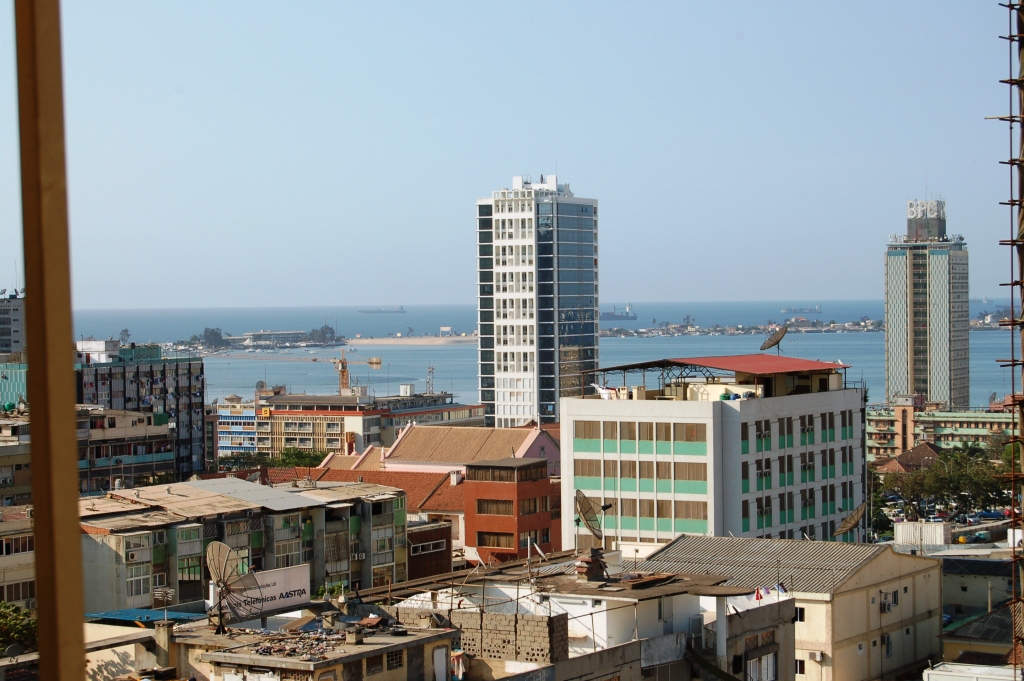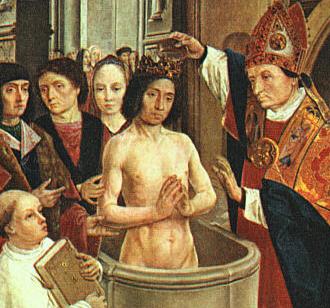|
Igreja Da Nossa Senhora Do Cabo
Igreja da Nossa Senhora do Cabo ( English: ''Church of Our Lady of the Cape'') is a church in the Ingombota District of Luanda, Angola. It is the oldest church in the city of Luanda, founded in 1575 by Portuguese traders, who dedicated it to Our Lady of the Immaculate Conception. After the reconquest of territory from the Dutch in 1648, reconstruction of the church started, and when completed in 1669 it was given its current name. In 1854, it became a parish church A parish church (or parochial church) in Christianity is the Church (building), church which acts as the religious centre of a parish. In many parts of the world, especially in rural areas, the parish church may play a significant role in com .... The stone church is characterized by having a secular cross and an elegant side tower. References Roman Catholic churches in Luanda Roman Catholic churches completed in 1575 1575 establishments in Africa 16th-century Roman Catholic church buildings in Angola Ingomb ... [...More Info...] [...Related Items...] OR: [Wikipedia] [Google] [Baidu] |
English Language
English is a West Germanic language that developed in early medieval England and has since become a English as a lingua franca, global lingua franca. The namesake of the language is the Angles (tribe), Angles, one of the Germanic peoples that Anglo-Saxon settlement of Britain, migrated to Britain after its End of Roman rule in Britain, Roman occupiers left. English is the list of languages by total number of speakers, most spoken language in the world, primarily due to the global influences of the former British Empire (succeeded by the Commonwealth of Nations) and the United States. English is the list of languages by number of native speakers, third-most spoken native language, after Mandarin Chinese and Spanish language, Spanish; it is also the most widely learned second language in the world, with more second-language speakers than native speakers. English is either the official language or one of the official languages in list of countries and territories where English ... [...More Info...] [...Related Items...] OR: [Wikipedia] [Google] [Baidu] |
Ingombota
Ingombota is one of the six urban districts that make up the municipality of Luanda, in the province of Luanda, the capital city of Angola. Ingombota is home to the central business district of Luanda, Angola. The economic, political and symbolic center of the city and the nation, it is Luanda's oldest district. The district is home to most of Luanda's prominent hotels and office towers. Etymology The word Ingombota originates from Kimbundu, while existing two theories as to its origin. One saying Ingombota comes from the words ''joint'' and ''ingombo kuta'', meaning ''place where there are abundant quiabos''. Another possibility would be to join the words ''Ngombo kuta'' and ''meaning a refuge for outlaws'' (possibly slaves), giving rise to the word ''Ngombota'', in Portuguese to Ingombota. Orientation Ingombota has 9.6 square kilometers (3.7 square miles) and about 370,000 inhabitants. The district is bordered on the west by the Atlantic Ocean, Sambizanga to the north, R ... [...More Info...] [...Related Items...] OR: [Wikipedia] [Google] [Baidu] |
Luanda
Luanda ( ) is the Capital city, capital and List of cities and towns in Angola, largest city of Angola. It is Angola's primary port, and its major industrial, cultural and urban centre. Located on Angola's northern Atlantic coast, Luanda is Angola's administrative centre, its chief seaport, and also the capital of the Luanda Province. Luanda and its metropolitan area is the most populous Portuguese-speaking capital city in the world and the most populous Lusophone city outside Brazil. In 2020 the population reached more than 8.3 million inhabitants (a third of Angola's population). Among the oldest colonial cities of Africa, Luanda was founded in January 1576 as ''São Paulo da Assunção de Loanda'' by Portuguese explorer Paulo Dias de Novais, being occasionally called "Leonda" or "St Paul de Leonda" by non-Portuguese sources. The city served as the centre of the Slavery in Angola, slave trade to Brazil before the institution was prohibited. At the start of the Angolan Civil W ... [...More Info...] [...Related Items...] OR: [Wikipedia] [Google] [Baidu] |
Angola
Angola, officially the Republic of Angola, is a country on the west-Central Africa, central coast of Southern Africa. It is the second-largest Portuguese-speaking world, Portuguese-speaking (Lusophone) country in both total area and List of countries and dependencies by population, population and is the List of African countries by area, seventh-largest country in Africa. It is bordered by Namibia to the south, the Democratic Republic of the Congo to the north, Zambia to the east, and the Atlantic Ocean to the west. Angola has an Enclave and exclave, exclave province, the province of Cabinda Province, Cabinda, that borders the Republic of the Congo and the Democratic Republic of the Congo. The capital and most populous city is Luanda. Angola has been inhabited since the Paleolithic, Paleolithic Age. After the Bantu expansion reached the region, states were formed by the 13th century and organised into confederations. The Kingdom of Kongo ascended to achieve hegemony among the ... [...More Info...] [...Related Items...] OR: [Wikipedia] [Google] [Baidu] |
Our Lady Of The Immaculate Conception
The Immaculate Conception is the doctrine that the Virgin Mary was free of original sin from the moment of her conception. It is one of the four Marian dogmas of the Catholic Church. Debated by medieval theologians, it was not defined as a dogma until 1854, by Pope Pius IX in the papal bull '' Ineffabilis Deus''. While the Immaculate Conception asserts Mary's freedom from original sin, the Council of Trent, held between 1545 and 1563, had previously affirmed her freedom from personal sin. The Immaculate Conception became a popular subject in literature, but its abstract nature meant it was late in appearing as a subject in works of art. The iconography of Our Lady of the Immaculate Conception shows Mary standing, with arms outstretched or hands clasped in prayer. The feast day of the Immaculate Conception is December 8. Many Protestant churches rejected the doctrine of the Immaculate Conception as unscriptural, though some Anglicans accept it as a pious devotion. The te ... [...More Info...] [...Related Items...] OR: [Wikipedia] [Google] [Baidu] |
Dutch People
The Dutch, or Netherlanders (Dutch language, Dutch: ) are an ethnic group native to the Netherlands. They share a common ancestry and culture and speak the Dutch language. Dutch people and their descendants are found in migrant communities worldwide, notably in Argentina, Aruba, Australia, Brazil, Canada,Based on Statistics Canada, Canada 2001 Census]Linkto Canadian statistics. Caribbean Netherlands, Curaçao, Germany, Guyana, Indonesia, New Zealand, Sint Maarten, South Africa, Suriname, and the United States.According tFactfinder.census.gov The Low Countries were situated around the border of France and the Holy Roman Empire, forming a part of their respective peripheries and the various territories of which they consisted had become virtually autonomous by the 13th century. Under the Habsburgs, the Netherlands were organised into a single administrative unit, and in the 16th and 17th centuries the Northern Netherlands gained independence from Spain as the Dutch Republic. The ... [...More Info...] [...Related Items...] OR: [Wikipedia] [Google] [Baidu] |
Parish Church
A parish church (or parochial church) in Christianity is the Church (building), church which acts as the religious centre of a parish. In many parts of the world, especially in rural areas, the parish church may play a significant role in community activities, often allowing its premises to be used for non-religious community events. The Church architecture, church building reflects this status, and there is considerable variety in the size and style of parish churches. Many villages in Europe have churches that date back to the Middle Ages, but all periods of architecture are represented. Catholic Church Each diocese (administrative unit, headed by a bishop) is divided into parishes. Normally, a parish consists of all Catholics living within its geographically defined area. Within a diocese, there can also be overlapping parishes for Catholics belonging to a particular rite, language, nationality, or community. Each parish has its own central church called the parish church, ... [...More Info...] [...Related Items...] OR: [Wikipedia] [Google] [Baidu] |
Roman Catholic Churches In Luanda
Roman or Romans most often refers to: *Rome, the capital city of Italy *Ancient Rome, Roman civilization from 8th century BC to 5th century AD *Roman people, the people of Roman civilization *Epistle to the Romans, shortened to Romans, a letter written by Paul, found in the New Testament of the Christian Bible * Ar-Rum (), the 30th sura of the Quran. Roman or Romans may also refer to: Arts and entertainment Music *Romans (band), a Japanese pop group * ''Roman'' (album), by Sound Horizon, 2006 * ''Roman'' (EP), by Teen Top, 2011 *"Roman (My Dear Boy)", a 2004 single by Morning Musume Film and television *Film Roman, an American animation studio * ''Roman'' (film), a 2006 American suspense-horror film * ''Romans'' (2013 film), an Indian Malayalam comedy film * ''Romans'' (2017 film), a British drama film * ''The Romans'' (''Doctor Who''), a serial in British TV series People *Roman (given name), a given name, including a list of people and fictional characters *Roman (surname), ... [...More Info...] [...Related Items...] OR: [Wikipedia] [Google] [Baidu] |
1575 Establishments In Africa
Year 1575 ( MDLXXV) was a common year starting on Saturday of the Julian calendar. Events January–March * January 21 – Queen Elizabeth I of England grants a monopoly on producing printed sheet music, to Thomas Tallis and William Byrd. * February 8 – William I of Orange founds Leiden University. * February 11 – Portuguese explorer Paulo Dias de Novais arrives in southeastern Africa to colonize what is now Angola. * February 13 – The formal coronation of Henry III as King of France takes place at the Reims Cathedral. Henry inherited the throne on May 30, 1574, upon the death of his older brother, Charles IX. He marries Louise de Lorraine-Vaudémont. * March 3 – Battle of Tukaroi: The Mughal Empire decisively defeats the Karrani dynasty of Bengal. The battle took place near the village of Tukaroi in present-day Balasore District of Odisha. April–June * April 2 – English privateer Gilbert Horseley and his crew sail into the ... [...More Info...] [...Related Items...] OR: [Wikipedia] [Google] [Baidu] |
16th-century Roman Catholic Church Buildings In Angola
The 16th century began with the Julian year 1501 (represented by the Roman numerals MDI) and ended with either the Julian or the Gregorian year 1600 (MDC), depending on the reckoning used (the Gregorian calendar introduced a lapse of 10 days in October 1582). The Renaissance in Italy and Europe saw the emergence of important artists, authors and scientists, and led to the foundation of important subjects which include accounting and political science. Copernicus proposed the heliocentric universe, which was met with strong resistance, and Tycho Brahe refuted the theory of celestial spheres through observational measurement of the 1572 appearance of a Milky Way supernova. These events directly challenged the long-held notion of an immutable universe supported by Ptolemy and Aristotle, and led to major revolutions in astronomy and science. Galileo Galilei became a champion of the new sciences, invented the first thermometer and made substantial contributions in the fields of phy ... [...More Info...] [...Related Items...] OR: [Wikipedia] [Google] [Baidu] |






